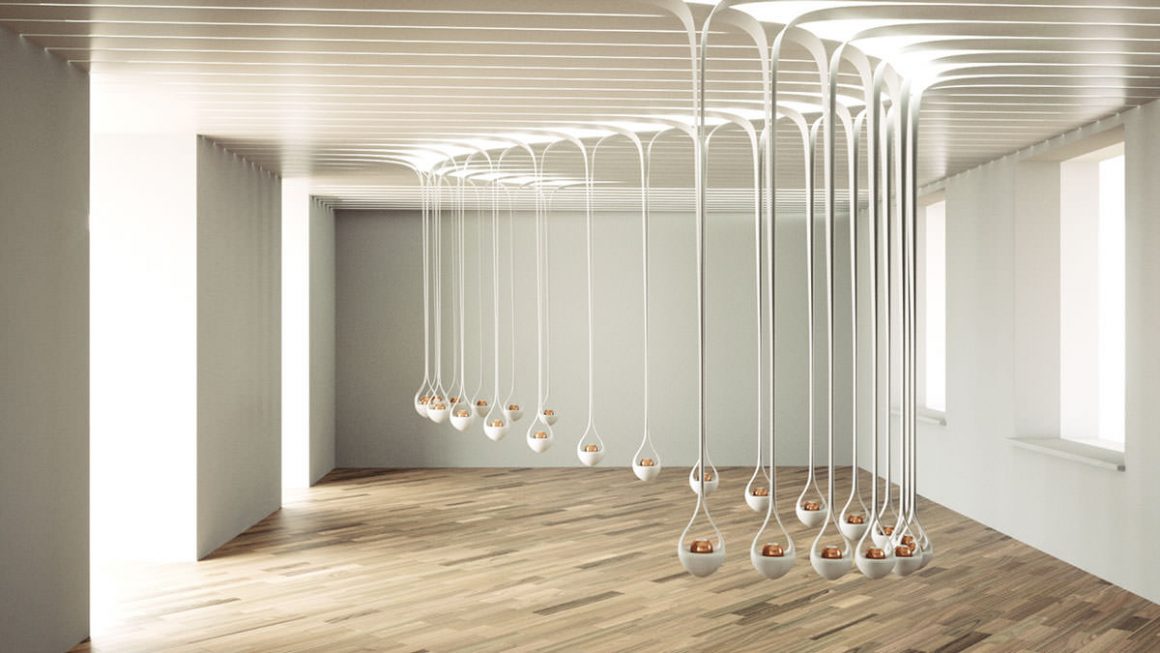Housed in a historic mansion on 73 Rue du Faubourg Saint-Honoré, the newly opened Grand Musée du Parfum explores the multi-faceted universe of perfume, taking an artful and scientific approach to unveiling its mysteries.
Paris is undeniably one of the world’s perfume capitals: approximately 400 new fragrances are created here each year, generating annual revenues of €25 billion. Until recently, however, there wasn’t a dedicated cultural venue for the French perfume industry in Paris.
That all changed with the opening of Le Grand Musée du Parfum (The Great Museum of Perfume) last December. Located in a historic 19th-century mansion on 73 Rue du Faubourg Saint-Honoré that was formerly home to Christian Lacroix’s Haute Couture flagship store and headquarters, it is Paris’ first independent museum dedicated to fragrance (there is another perfume-themed museum in Paris, operated by and dedicated to Fragonard).
Conceived as a “hymn to perfume“, the museum embodies the vision of museum director and co-founder Guillaume de Maussion, with support from the French Syndicate of Perfumery and an advisory board of 16 experts including Sylvaine Delacourte, Guerlain’s director of fragrance evaluation and development, Cartier perfumer Mathilde Laurent, and Jean-Claude Ellena, house perfumer at Hermès.
While the museum is dedicated to scent, it is also visually stunning. The innovative scenography, designed by architecture firm Projectiles, draws on the latest technology, merging it with specially commissioned artistic installations to create an interactive, multi-sensory, immersive experience. Spread over 1,400 m² (15,000+ ft²) its museography unravels the mysteries of perfume through exploring not only the history, science and art of fragrance, but also of our sense of smell, a sense that remains largely little-understood and underrated.
Telling the story of perfume is like telling the story of humanity. – Sandra Armstrong, Museum Director
The journey begins with an exploration into the history of perfume, dating back to antiquity. Visitors can experience the woody scent of kyphi, the earliest perfume composition known to man, used by Ancient Egyptians to invoke the gods. The Seducers Gallery tells the story of the special relationship of famous historical figures and legends like Cleopatra, Napoleon Bonaparte and Louis XIV with scent. The Rise of French Perfume illustrates the connection between perfume and haute couture: there is a reproduction of a Parisian shopping arcade, including a partial reconstruction of one of the earliest perfume houses, Houbigant, founded in 1775. The staircase features a “Wall of Fame,” showcasing an iconic perfume for each year between 1921–2000.
Nothing revives the past so completely as a smell that was once associated with it. – Vladimir Nabokov
In the second part of the exhibition, visitors are invited to reconnect with their own sense of smell and to discover its extraordinary emotional power. A series of interactive experiments guide an educational exploration into how the sense of smell is connected to the parts of the brain that govern emotion and memory, and how smell can function as a source of information, facilitating the recognition of a person or a place, warning us of a danger, or spontaneously retrieving a memory. This principle is put into practice in the Garden of Scents where trumpet-like sculptures diffuse familiar smells such as cinnamon, fire and Coca-Cola for visitors to identify.
The sense of smell can be extraordinarily evocative, bringing back pictures as sharp as photographs of scenes that had left the conscious mind. – Thalassa Cruso
The third part of the museum celebrates the art of the perfumer. The elegant Scent Drops by Harvey & John introduce some of the raw materials available to perfumers; Each of the 25 metal orbs releases one of the most popular perfume ingredients, like jasmine, bergamot, orange blossom and patchouli, and provides a description of the scent in the visitor’s preferred language.
Violette Houot’s Blossom pays homage to the rose: each of its branches carries a famous rose-based perfume – the perfumer’s own interpretation of rose absolute.
We are then invited into the perfume maker’s laboratory, where master perfumers (also known as “noses”) guide us through their creative process and the techniques they use in composing scents.
The alchemy of perfume mixing through the layering of essences is brought to life via the Perfume Organ by Jason Bruges where each perfume ingredient is represented by a musical note and a ray of light, evoking the lower, middle and upper fragrance notes perfumers use to compose a perfume.
As you make your way through the Musée du Parfum, make sure to note your favourites among the more than 70 fragrances you have experienced in the museum on your olfactory notebook; the museum’s concept store will accept the challenge of finding a perfume that matches your personalized scent profile amongst the many perfumes available for purchase. There is also a bookshop with an impressive selection of books devoted to perfume and even novels in which scent holds a special place.
Future plans for the museum include cultivating the mansion’s 1,200 m² (13,000 ft²) garden with aromatic plants and flowers such as roses, vetiver, jasmine and lavender, to create a natural sensory environment and raise awareness about sustainable development.
Le Grand Musée du Parfum
73 Rue de Faubourg Saint-Honoré, 75008 Paris.
http://www.grandmuseeduparfum.fr/
